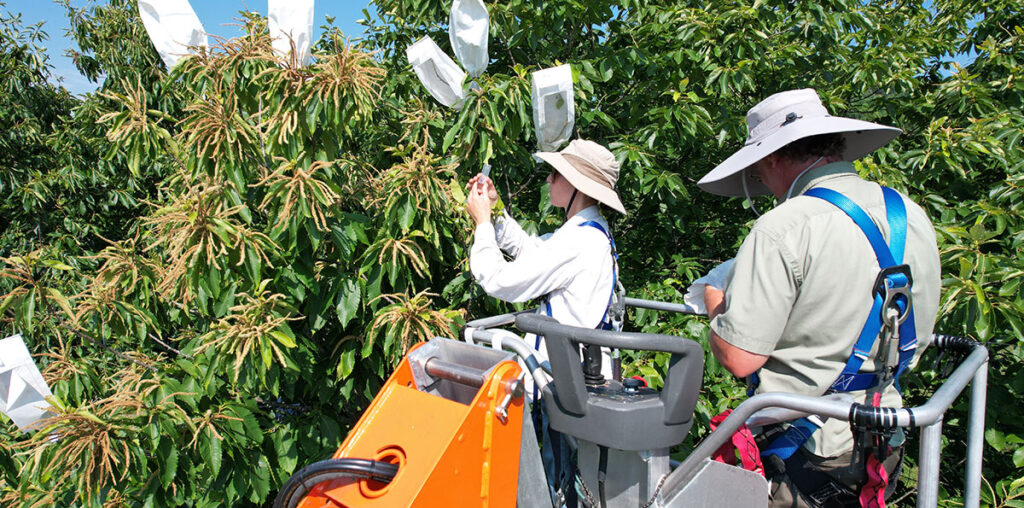“Chestnuts Roasting on an Open Fire” is playing on the radio now in the Northern Hemisphere which begs the question, “What happened to the American chestnut?” Would you be surprised to hear there’s a group dedicated to bringing it back from “functional extinction?” [via Inhabitat]
Between logging and the introduction of chestnut blight, the once prevalent American chestnut became increasingly uncommon throughout its traditional range in the Appalachians. While many trees in the southern range were killed by Phytophthora root rot (PRR), the chestnut blight leaves roots intact, so many chestnuts have been surviving by growing back from the roots only to succumb to the blight and be reborn again. Now, scientists are using a combination of techniques to develop blight-resistant trees from this remaining population.
The American Chestnut Foundation recognizes you can’t improve what you can’t measure and uses a combination of “small stem assays (SSAs) performed on potted seedlings, improved phenotype scoring methods for field-grown trees, and the use of genomic prediction models for scoring resistance based on genotype.” This allows them to more rapidly screen varieties for blight resistance to further their efforts. One approach is based on conventional plant breeding techniques and has been crossing blight and PRR-resistant Chinese chestnuts with the American type. PRR resistance has been found to be less genetically complicated, so progress has been faster on resistance to that particular problem.
Research is also ongoing on transgenic solutions to both the blight and PRR. Initial experiments using a wheat gene had mixed results, but researchers hope to develop a version that can be expressed in more nuanced conditions like when a tree is more susceptible to infection. This could prevent or reduce some of the negative affects of the transgenic hack like increased tree mortality and metabolic costs with always producing the oxalate oxidase enzyme that interferes with the blight toxin.
If we’re tinkering with genomes anyway, maybe boosting the American chestnut’s photosynthetic efficiency isn’t out of the question? If you’re more interested in making insulin or combating mosquito-borne diseases, there’s a biohack for that too.

